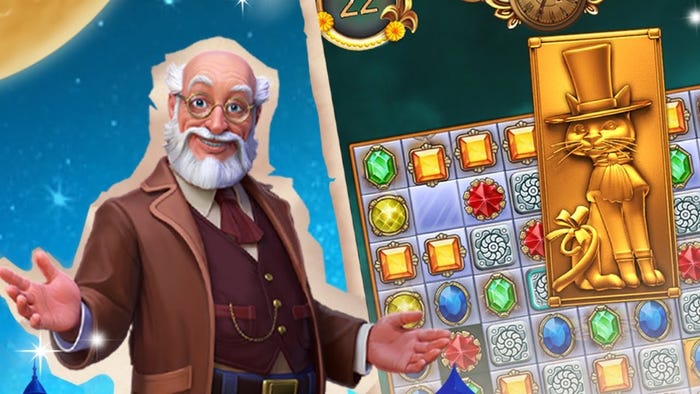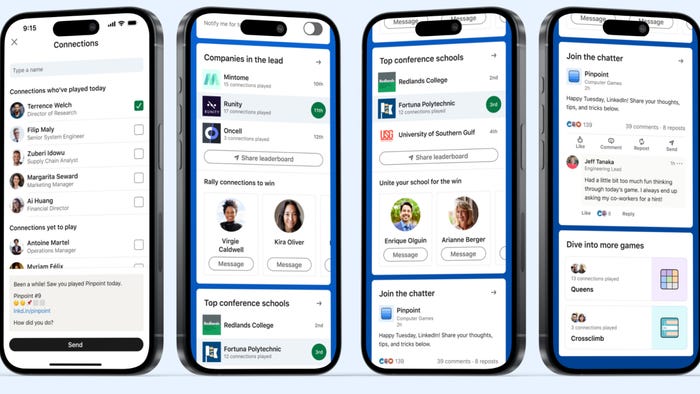The Color And The Shape: Bizarre Creations On GeoWars' Sensible Aesthetic
In many ways, the team at Bizarre Creations produced a successful formula for Geometry Wars by accident -- and during GameCity, its creators talked about the logical sources of the game's distinctive look, feel and sound, and the challenges of evol

At a glance, the central vision behind Bizarre Creations' dual-stick shooter Geometry Wars seems like an oxymoron: the team calls it a "next-generation arcade classic." Given its distinctive look and old-school feel, though, it's not so hard to wrap one's head around. Lead designer Stephen "Cakey" Cakebread and games manager Craig Howard discussed the particulars of executing on Geometry Wars series' creation and evolution during the recent GameCity event in Nottingham, England. Geometry Wars has a distinctive look, with color-saturated neon and bursts of glowing stardust. But Cakebread isn't an artist -- in fact, the game started out as a test application, and these factors drove the decision to use simple geometric shapes. Cakebread literally mapped thenm out on graph paper, hand-coded all the original shapes into the tool, and used simple particle effects for graphical flourishes. By the time Microsoft decided to update the game for its Xbox Live Arcade debut, there wasn't sufficient development time to change the graphics significantly. This extended to the audio, which used simple MIDI sound effects. The first game was developed to be played in 4:3 aspect ratio in 480p, as HD wasn't yet in wide use. However, the original design decisions ended up driving the series' retro feel. Retro Evolved had to support 16:9 and resolutions up to 720p. To avoid squashing and stretching the play field, the game's final release included minimal scrolling. The frantic onscreen action made it impractical to use star fields for the game's backgrounds -- thus the grid was born, and happily, it was built as a second layer. Significant game objects got a distinctive shadow, while the rest was left flat. The effect is subtle, but allows the player's subconscious to focus on game elements rather than backgrounds and effects. Retro Evolved 2 presented a new challenge: It had to differentiate itself while still retaining the Geometry Wars feel. For this iteration, the designers first tried to implement a true 3D version of the game, but they felt this lost the original franchise's charm and play. Instead, the duo explains that they chose 3D sprites, and were able to add a multicolor grid that dynamically coordinated with the colors of the enemies projected onto it. They were also able to render a post-processing pass to the entire game while having it run at 60 frames per second. More significantly, the team overhauled the user interface completely, which went a long way toward making the release feel like a whole new game. Concurrently, the game's audio underwent several significant changes. The original test application had no music, and the visuals drove basic sound effects based off of synthesizer-style sounds. Even in the original release of the game in Project Gotham Racing 2, a lot of attention was paid to the sounds. Individual enemies had unique spawning sounds, and experienced players were able to use these as cues that enhanced their play. Retro Evolved's sound effects underwent a more modern pass. The range was expanded considerably, and official theme music was added for the first time. Technically, the team was also able to post-process the sound effects and music while still leaving ample processor time for solid frame rates. The Galaxies iteration, created by third-party studio DoubleSix, included a much wider range of musical tracks. The developers invited musicians to watch the game and then block the play actions musically. There were some technical constraints for the DS version, so they used samples of the music composed for the Wii version and included a smaller range of songs. Finally, the two explained that Retro Evolved 2 added interactive music to the mix, and additional audio effects like time stretching, layered mixes, and tracks that were mixed on the fly. The goal was to intrinsically link the play experience to the sounds. Overall, the series has evolved to such an extent in its own right that many even forget that the original Geometry Wars was simply an Easter Egg packed into Project Gotham Racing 2.
About the Author(s)
You May Also Like








